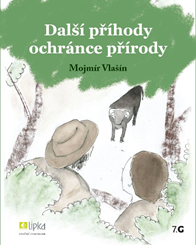Tiskové zprávy
WWF: Jižní Afrika schválila novou rezervaci pro nosorožce dvourohé
The Zululand Rhino Reserve in South Africa's KwaZulu-Natal Province is to become the second site for endangered black rhinoceros conservation.
The WWF/Ezemvelo KZN Wildlife Black Rhino Range Expansion Project will help translocate later this year a founder population of 17-20 black rhinos on to the newly-approved 17,000ha area, which is made of up 12 adjoining properties.
“We started putting the idea of creating a single biosphere incorporating the current Zululand Rhino Reserve back in 1998. The Black Rhino Project has been the catalyst that finally welded it all together," said Clive Vivier, Chairman of the Zululand Rhino Reserve and owner of Leopard Mountain, which is one of the properties in the consortium.
"If you look to the north or the south of us, pristine bush has been taken up by monoculture and cattle farming. Our wilderness is disappearing. It’s so wrong. And what we’re doing with the help of the project is so right.”
The aim of the Black Rhino Range Expansion Project is to increase numbers of black rhino (Diceros bicornis) by increasing the land available for their conservation, thus reducing pressure on existing reserves and providing new territory in which they can breed.
It does this by identifying large pieces of land with an ecological carrying capacity of 50 or more black rhino on which a founder population can be released. To reach this, neighbouring landowners usually have to remove internal fences and consolidate smaller pieces of land into more ecologically viable blocks.
“The success of the first release of 15 black rhino in 2004 at Mun-ya-Wana Game Reserve has given us real confidence in this innovative and bold approach,” said WWF’s project leader Dr Jacques Flamand.
“Those animals have settled extremely well into their new home. There have been no losses through fights or accident and matings have been observed so we’re looking forward to the prospect of lots of calves. As the idea of the project is to increase the growth rate of the overall black rhino population in KwaZulu-Natal, this is very promising.”
Ezemvelo KZN Wildlife has a proven track record of successful rhino conservation and the project is a continuation of that history.
Black rhino, which used to be the most numerous rhinoceros species in the world, became critically endangered following a catastrophic poaching wave in the 1970s and 1980s which saw 96 per cent of the population in Africa wipedout. At the lowest point, there were just 2,500 black rhino left.
Thanks to intensive protection efforts by organizations like Ezemvelo KZN Wildlife and WWF, that number has gradually increased to around 3,600.
“Our responsibility is to increase numbers of black rhino and we recognize the value of partnerships with other sectors to help us achieve this goal,” said Khulani Mkhize, CEO of Ezemvelo KZN Wildlife.
WWF, and its conservation partner, is continuing to look for strategic partnerships with landholders within the species’ historic range.
"They needn’t have been traditionally involved in conservation and we are currently in negotiations with community landholders whose land could become future project sites,” added Dr Flamand.
Initially, the focus of the project is on finding suitable sites within KwaZulu-Natal, but once these have been saturated, the project will look further afield.
NOTES:
• There are four black rhino subspecies: the southern-central black rhino (Diceros bicornis minor), the south-western black rhino (D.b. bicornis), adapted to the arid and semi-arid savannas of Namibia, southern Angola, western Botswana and western South Africa, the East African black rhino (D.b. michaeli), now found mostly in Kenya, and the west African black rhino (D.b. longipes), the rarest and most endangered subspecies, now found in northern Cameroon.
• The black rhinoceros has two horns, although occasionally a third small posterior horn is present. The anterior horn is longer than the posterior, averaging 50cm long. It is distinguished from the white rhino by a prehensile upper lip, which it uses to feed on twigs of woody plants and a variety of herbaceous plants.
The WWF/Ezemvelo KZN Wildlife Black Rhino Range Expansion Project will help translocate later this year a founder population of 17-20 black rhinos on to the newly-approved 17,000ha area, which is made of up 12 adjoining properties.
“We started putting the idea of creating a single biosphere incorporating the current Zululand Rhino Reserve back in 1998. The Black Rhino Project has been the catalyst that finally welded it all together," said Clive Vivier, Chairman of the Zululand Rhino Reserve and owner of Leopard Mountain, which is one of the properties in the consortium.
"If you look to the north or the south of us, pristine bush has been taken up by monoculture and cattle farming. Our wilderness is disappearing. It’s so wrong. And what we’re doing with the help of the project is so right.”
The aim of the Black Rhino Range Expansion Project is to increase numbers of black rhino (Diceros bicornis) by increasing the land available for their conservation, thus reducing pressure on existing reserves and providing new territory in which they can breed.
It does this by identifying large pieces of land with an ecological carrying capacity of 50 or more black rhino on which a founder population can be released. To reach this, neighbouring landowners usually have to remove internal fences and consolidate smaller pieces of land into more ecologically viable blocks.
“The success of the first release of 15 black rhino in 2004 at Mun-ya-Wana Game Reserve has given us real confidence in this innovative and bold approach,” said WWF’s project leader Dr Jacques Flamand.
“Those animals have settled extremely well into their new home. There have been no losses through fights or accident and matings have been observed so we’re looking forward to the prospect of lots of calves. As the idea of the project is to increase the growth rate of the overall black rhino population in KwaZulu-Natal, this is very promising.”
Ezemvelo KZN Wildlife has a proven track record of successful rhino conservation and the project is a continuation of that history.
Black rhino, which used to be the most numerous rhinoceros species in the world, became critically endangered following a catastrophic poaching wave in the 1970s and 1980s which saw 96 per cent of the population in Africa wipedout. At the lowest point, there were just 2,500 black rhino left.
Thanks to intensive protection efforts by organizations like Ezemvelo KZN Wildlife and WWF, that number has gradually increased to around 3,600.
“Our responsibility is to increase numbers of black rhino and we recognize the value of partnerships with other sectors to help us achieve this goal,” said Khulani Mkhize, CEO of Ezemvelo KZN Wildlife.
WWF, and its conservation partner, is continuing to look for strategic partnerships with landholders within the species’ historic range.
"They needn’t have been traditionally involved in conservation and we are currently in negotiations with community landholders whose land could become future project sites,” added Dr Flamand.
Initially, the focus of the project is on finding suitable sites within KwaZulu-Natal, but once these have been saturated, the project will look further afield.
NOTES:
• There are four black rhino subspecies: the southern-central black rhino (Diceros bicornis minor), the south-western black rhino (D.b. bicornis), adapted to the arid and semi-arid savannas of Namibia, southern Angola, western Botswana and western South Africa, the East African black rhino (D.b. michaeli), now found mostly in Kenya, and the west African black rhino (D.b. longipes), the rarest and most endangered subspecies, now found in northern Cameroon.
• The black rhinoceros has two horns, although occasionally a third small posterior horn is present. The anterior horn is longer than the posterior, averaging 50cm long. It is distinguished from the white rhino by a prehensile upper lip, which it uses to feed on twigs of woody plants and a variety of herbaceous plants.
Tento článek patří do kategorie |
Online diskuse
Redakce Ekolistu vítá čtenářské názory, komentáře a postřehy. Tím, že zde publikujete svůj příspěvek, se ale zároveň zavazujete dodržovat pravidla diskuse. V případě porušení si redakce vyhrazuje právo smazat diskusní příspěvěk





